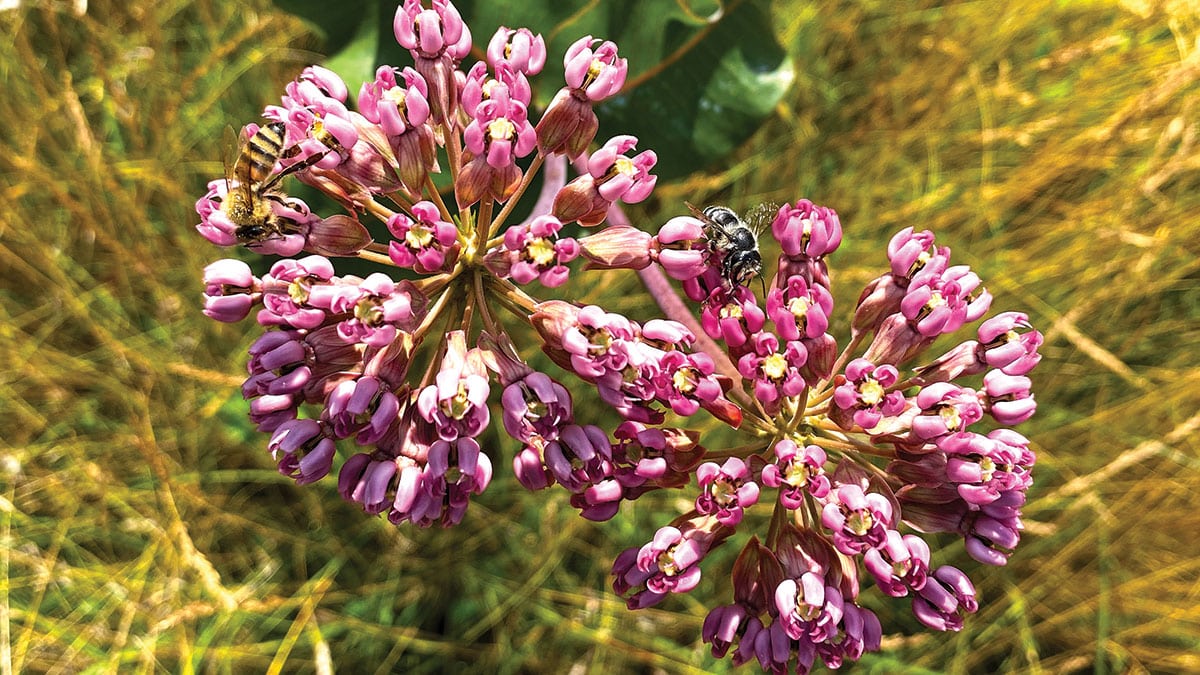by Dr. Sarah Treanor Bois
Director of Research & Education at the Linda Loring Nature Foundation
Let’s talk about milkweed.
When you hear the word “milkweed” you probably think about monarch butterflies. Maybe you’ve even spent some time looking for monarch caterpillars on plants. What you might not realize is that Nantucket boasts six species of milkweed with at least four easily seen around the island. These plants are important to more than just monarchs. They play an important role to many other creatures in the environment.
Milkweeds are perennial plants native to the U.S., parts of Canada, Mexico and Central America. Named for the milky, white sap that runs through their stems and leaves, they can be found in nearly every habitat from marshes to meadows and even deserts. They vary tremendously in appearance; from broad to narrow leaves, short to tall plants, and they come in a variety of flower colors.
Right now on Nantucket, you may notice a few spots of blunt-leaved (or clasping) milkweed (Asclepias amplexicaulis) in bloom. It has leaves which clasp the stem and appear really ruffled and waxy. It requires sandy fields and open woodland habitat. There are some near my house and I love seeing both the dark green vegetation and the light pink/purple flowers. The smell is nice and not too sweet. One botanist friend of mine described it as “Spicy and exotic.” Check out areas near Altar Rock for potential sightings.
Swamp milkweed (Asclepias incarnata) is the only milkweed in New England that is primarily found in swamps and wet areas. On Nantucket, they are frequent in the coastal pond shores. It can typically grow 3-4 feet tall with small, fragrant flowers pink to mauve in color. The leaves are narrow and lance-shaped, with the ends tapering to a sharp point.
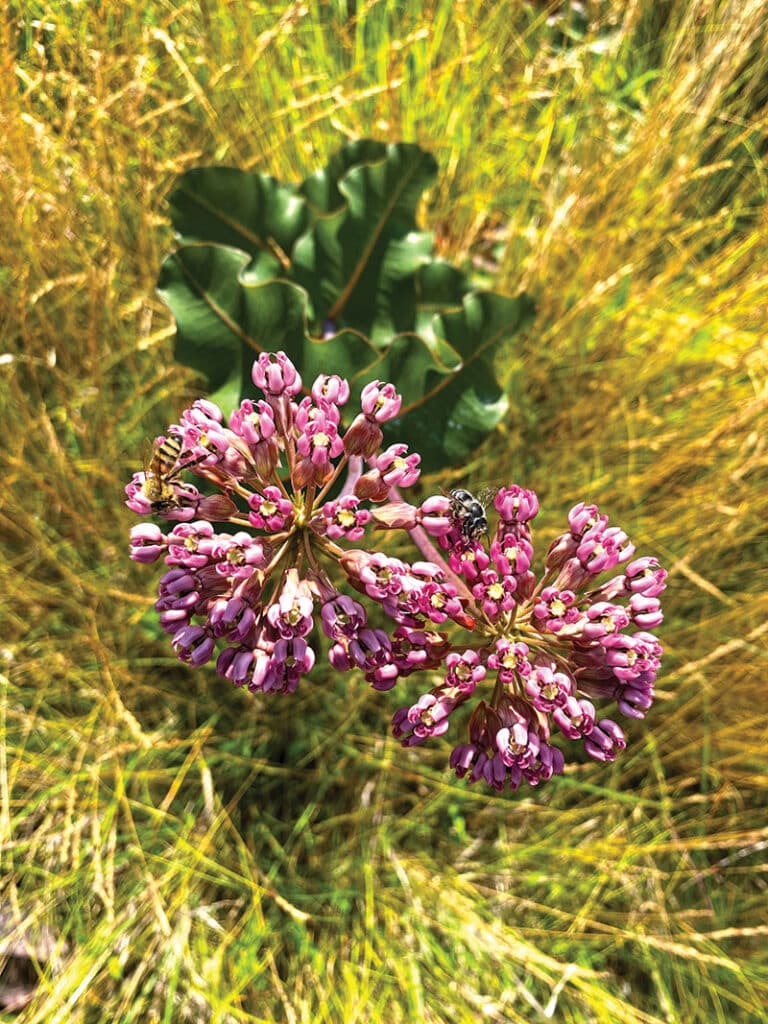
A favorite of mine is the orange or butterfly milkweed (Asclepias tuberosa). Rare in sandplain grasslands, this species has been planted in several spots around the island as a popular garden plant. Come check some out at the Linda Loring Nature Foundation office at 110 Eel Point Road. Its bright orange flowers make it a showstopper for people and insects alike. It has much narrower leaves than other milkweed species and also has the distinction of having alternately arranges leaves as opposed to opposite leaves which most milkweeds have. It blooms mid- to late summer. Although it is relatively widespread in Massachusetts, like many milkweed species, it is rare and, thus, protected in most states.
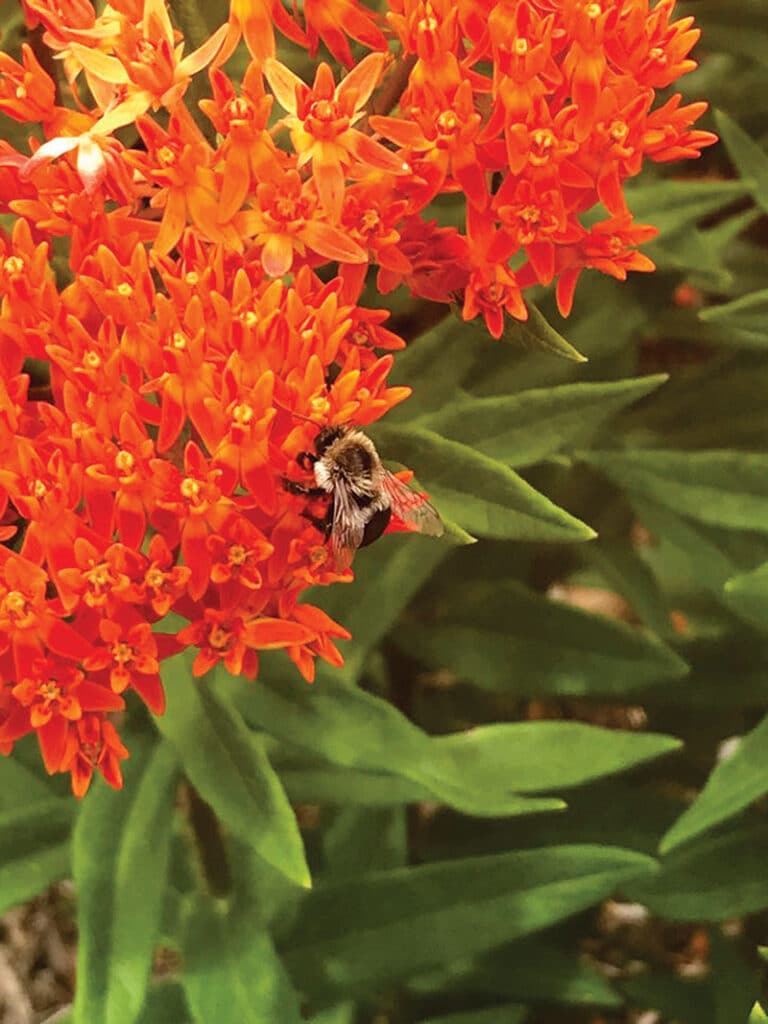
Purple milkweed (Asclepias purpurascens) is the only milkweed on Nantucket listed as Endangered by the Massachusetts Natural Heritage Endangered program. Unlike other milkweeds, this species does not “run,” or spread by rhizomes. It resembles common milkweed, but its flowers are more of a deep purple. The smooth seed pod of purple milkweed can also be used to distinguish it from the warty fruit of common milkweed. Traditionally found in heathland clearings, they should be abundant on island. Their populations have been declining, however, and they are now extremely rare throughout the historic range.
Common milkweed (Asclepias syriaca) is the species most people think about as monarch food and is probably our most recognizable. It is found in fields and roadsides in all New England states. On Nantucket, it can be found in many similar habitats, along the bike paths, walking trails and roadsides. The flowers are highly fragrant and vary from white (rarely) through pinkish and purplish. These blossoms attract a frenzy of insect activity in mid-summer; and its distinctive seed pods release a hundred or more seeds flying on silky parachutes in late summer and early fall. Native Americans used the outer bark of the stem to make cord, thread, and bowstrings.
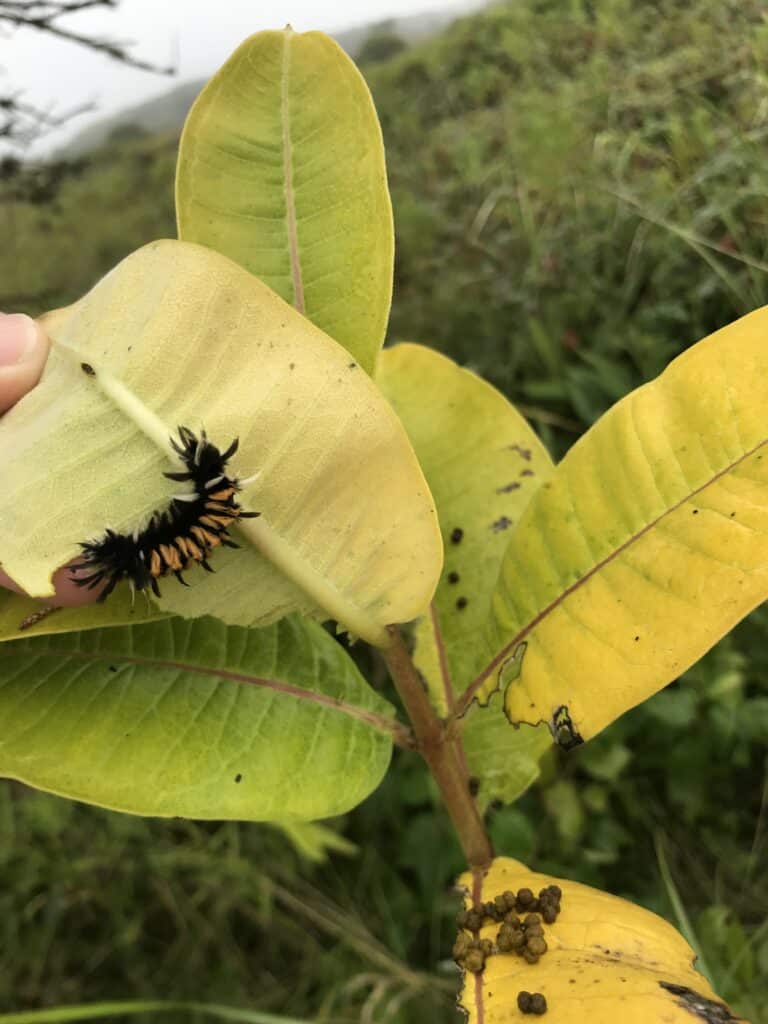
All of these milkweeds serve as shelter, nesting habitat, and as a food source for a multitude of animal species.
Animals that feed directly on milkweed, such as monarch caterpillars, are pretty unique. The white sap these plants produce contain toxic compounds that should kill monarch caterpillars if eaten, but instead, the caterpillars have evolved ways to withstand the toxins and store them internally to protect themselves from being eaten.
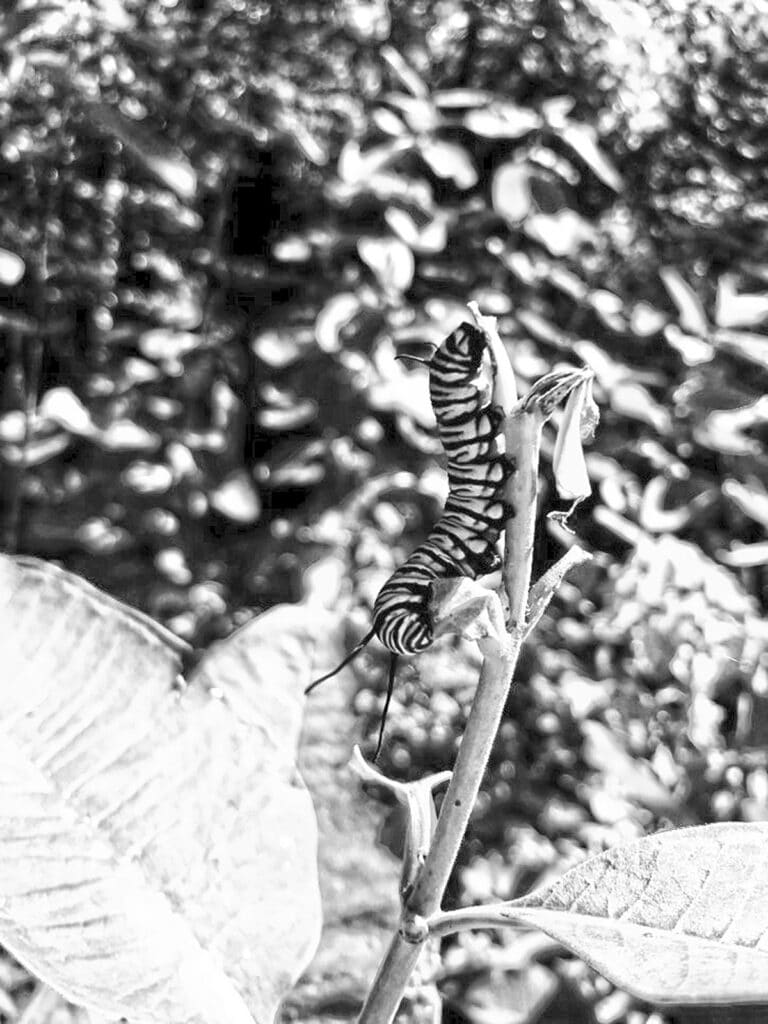
Just as monarchs make use of milkweeds and their toxins, humans have utilized these plants for centuries – as food, medicine, pillow stuffing, and even thread.
For as long as milkweed plants have been around, they have been crucial to the survival of a variety of animals, including hundreds of insect species that use the plant for food or shelter. Their flowers are visited by many species of native bees, wasps, and other nectar-seeking insects. Their leaves and roots are food for numerous beetles, caterpillars and true bugs. Insects feeding on plants serve as food for predators, which promotes ecosystem stability and species diversity. Insects in these milkweed communities also serve as a critical food source for a number of birds.
Insects are a critical part of every food web but due to habitat loss and a lack of nectar or other food sources, many species are in decline. Pollinators, especially native bees, have lost food and shelter across the U.S. and have declined at an alarming rate. Planting native milkweed can help to establish an entire food web, not only supporting monarch butterflies, but also contributing to the survival of countless other insects and birds.
Remember, do not pick or dig up our wildflowers. Take nothing but pictures. If you would like to grow milkweed as a nectar source for pollinators or to support the monarchs and other insects, check out MonarchWatch.org. They provide detailed information on purchasing and rearing milkweed plants based on your ecoregion.

